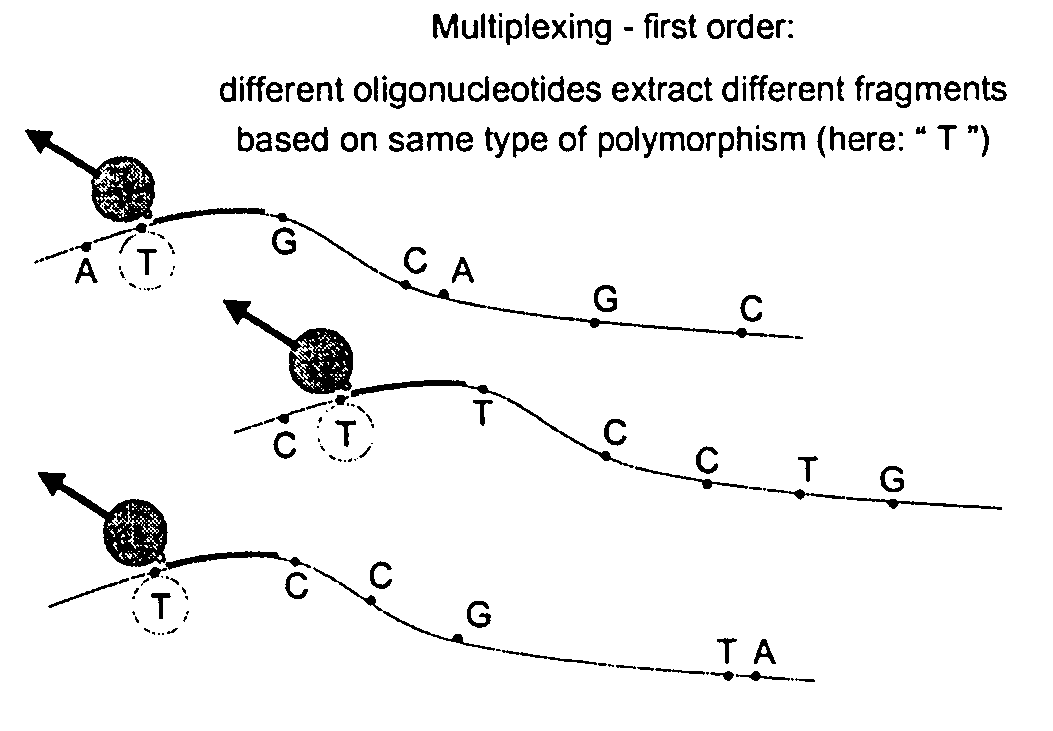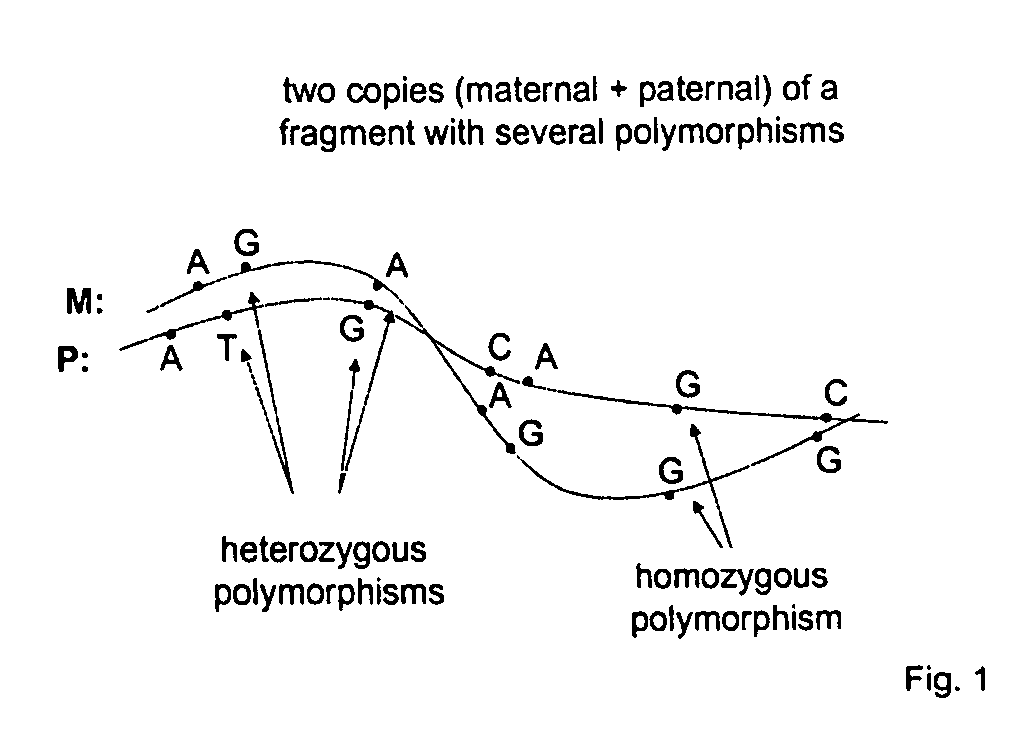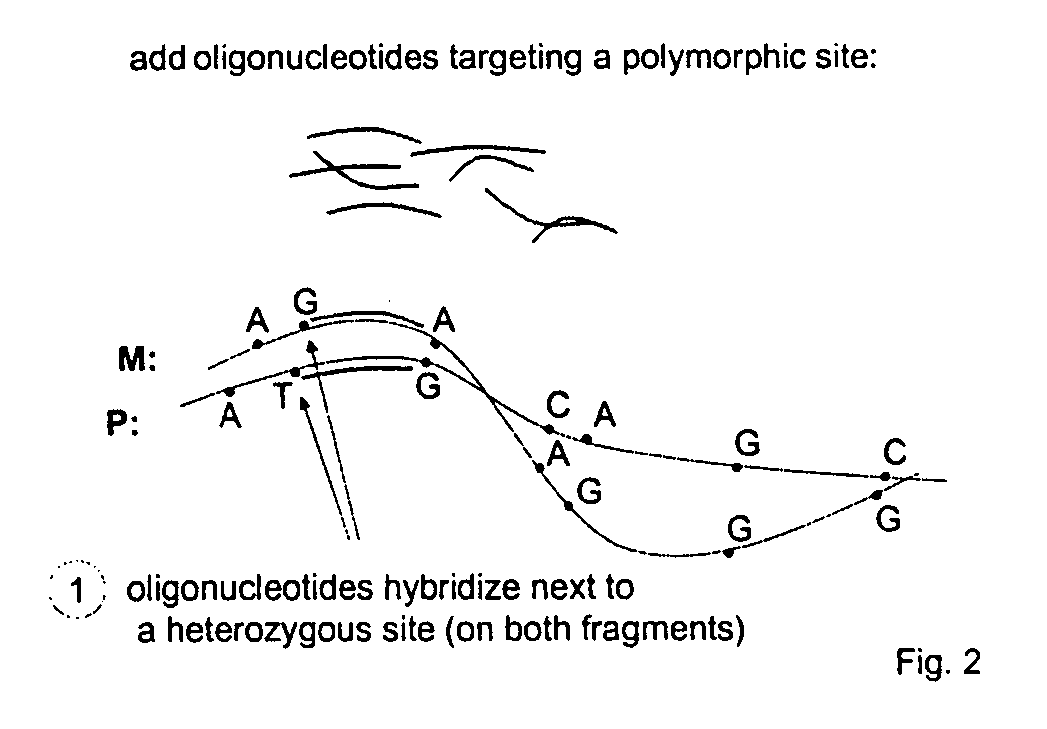Method for selectively isolating a nucleic acid
a nucleic acid and selective isolating technology, applied in the field of selective isolating nucleic acids, can solve the problems of labor-intensive and expensive current methods for identifying nucleic acid polymorphisms, and achieve the effects of rapid and economical isolating nucleic acid sequences, and reducing siz
- Summary
- Abstract
- Description
- Claims
- Application Information
AI Technical Summary
Benefits of technology
Problems solved by technology
Method used
Image
Examples
Embodiment Construction
[0038] The method provides for identifying and isolating specific nucleotide sequences in a population of nucleic acids. The method allows for haplotyping through specific chromosomal fragment capture.
[0039] In one embodiment, the method is divided into three steps:
1) “Targeting”
[0040] In a first step, a targeting element uniquely distinguishing a particular polynucleotide sequence is targeted. FIG. 2 is a schematic illustration showing annealing of oligonucleotides to a polymorphic site.
2) “Distinction”
[0041] In a second step, a process is carried out that distinguishes, based on the nature of the distinguishing element, between the targeted polynucleotide sequence(s) and any other sequence(s) present in the material by conditionally attaching or removing a functional group that can serve as a separation element for physical manipulation of the targeted polynucleotide sequence (FIG. 3).
3) “Separation”
[0042] In a third step, the targeted polynucleotide sequences are physicall...
PUM
| Property | Measurement | Unit |
|---|---|---|
| length | aaaaa | aaaaa |
| distance | aaaaa | aaaaa |
| nucleic acid | aaaaa | aaaaa |
Abstract
Description
Claims
Application Information
 Login to View More
Login to View More - R&D
- Intellectual Property
- Life Sciences
- Materials
- Tech Scout
- Unparalleled Data Quality
- Higher Quality Content
- 60% Fewer Hallucinations
Browse by: Latest US Patents, China's latest patents, Technical Efficacy Thesaurus, Application Domain, Technology Topic, Popular Technical Reports.
© 2025 PatSnap. All rights reserved.Legal|Privacy policy|Modern Slavery Act Transparency Statement|Sitemap|About US| Contact US: help@patsnap.com



